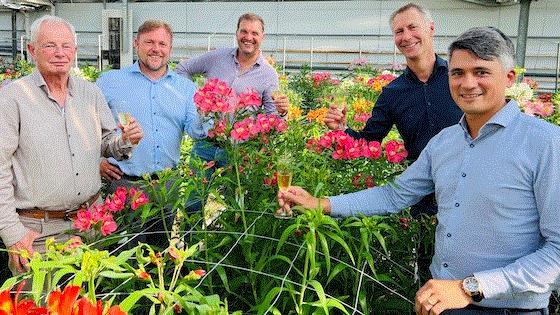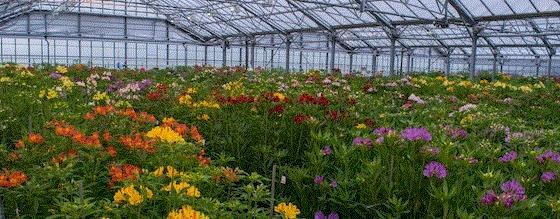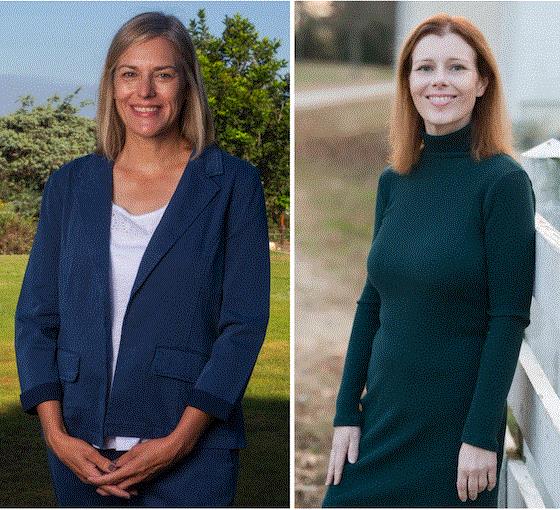AmericanHort, HRI respond to newly detected Phytophthora
The following is hot off the presses at AmericanHort, as reported by their expert staffers Craig Regelbrugge, Jennifer Grey, Kamron Newberry and Michael Martin
Phytophthora austrocedri, a species of Phytophthora never before reported in North America, has been detected in two Pacific Northwest nursery operations. In response, efforts are rapidly unfolding to address this emerging threat.
As is often the case with new plant health challenges, many questions remain: What are the origins of this pathogen? Was it introduced, and if so, how? How long has it been present? How far has it spread? And most importantly, how severe could its impact be on nurseries, landscapes and the ecosystem?
AmericanHort’s response focuses on three key areas: science, regulation and outreach/education. We are collaborating with the research community, industry partners such as the Oregon Association of Nurseries, and federal and state plant regulatory agencies.
On the research front, a team of leading scientists is already working to map out what is known and what still needs to be discovered to effectively address Phytophthora prevention—both for this new species and others that may threaten plant production.
A bit of early success to celebrate: As reported below, HRI has successfully secured the reprioritization of $250,000 in federal research funds to immediately begin developing and implementing effective strategies to prevent the spread of P. austrocedri and minimize its impact on the horticultural industry.
AmericanHort is also working to inform and shape the federal/state government response with the goals of minimizing disruption and harm to the industry, advancing a “best practices” approach, and ensuring that any regulatory burdens on our industry are commensurate with the threat. AmericanHort will keep you updated as this situation continues to evolve.

HRI secures emergency funds to research P. austrocedri
The Horticultural Research Institute (HRI) successfully secured the reprioritization of $250,000 in federal research funds to immediately begin developing and implementing effective strategies to prevent the spread of P. austrocedri and minimize its impact on the horticultural industry. Phytophthora austrocedri is a destructive pathogen threatening valuable ornamental crops, including cypress, arborvitae, juniper and cedar. Researchers at USDA and Oregon State University will spearhead efforts to study the biology, transmission and control of this emerging disease.
With the pathogen recently detected in Oregon and its ability to persist in soil and water, HRI says it is grateful for how quickly USDA ARS and HRI’s research partners were able to shift focus and respond.
“HRI’s ability to prioritize this research and our collaboration with industry experts and plant pathologists underscore our commitment to providing the industry with practical solutions safeguarding plants, landscapes and green industry businesses from emerging threats,” said the press release.
Learn more about P. austrocedri and the research HERE.

Könst gets new owners
Könst Alstroemeria, a well-known Dutch breeder and supplier of alstroemeria and zantedeschia (calla lily) plants, announced its acquisition last week by four horticultural industry entrepreneurs: current CEO Paco van der Louw, Geert Burger, Jelle Posthumus*, and Martin Buter. They bought the business from flower breeder Hans Könst, founder of the company.

Hans (left) toasts the lucky new owners of his company: Paco, Geert, Jelle and Martin.
Könst Alstroemeria is active in more than 55 countries, with facilities in The Netherlands, Colombia and Brazil, as well as sales support in Kenya and Japan.
The new owners are well-known for their knowledge and experience in the horticultural industry. Geert Burger is owner of Burger Lilies and Tulips; Jelle Posthumus is CEO of rose breeder United Selections; Martin Buter is owner of Amsonia Bulbs; and Paco van der Louw has been CEO of Könst since 2021.
“I am confident that this group of enthusiastic entrepreneurs will not only maintain the standards that have been the cornerstone of our success but also will bring new energy and innovation into the company,” said Hans in the press release.
“We are excited to join forces with such esteemed partners and move forward with this strong leadership team,” said Paco van der Louw. “Our combined vision and passion for horticulture will drive the company to new heights, allowing us to build on our rich history while pushing the boundaries of innovation in alstroemeria and zantedeschia.”
*An unusual name, to be sure. Curious, I looked up the etymology: Jelle is a Frisian short form of name from the old German “Gelt,” meaning payment, tribute or compensation. And Posthumus is from medieval English and was used as a second or third name to indicate the child of a deceased parent.

Dutch cut flower sector “hugely under pressure”
When I got the press release above, I asked my Dutch friend and magazine colleague, Ron van der Ploeg, editor of FloraCulture International, if he had any more information about the reason behind the sale. He did not; he could only speculate, so I will leave that question unanswered until I can reach Mr. Könst or one of the new owners.
But Ron did say the Dutch cut flower segment “is hugely under pressure.”

“Yeah? How so?” I asked. He sent me this list in reply:
- Energy costs
- Societal pressures (“Do we really need flowers if they are only decorative?”)
- Lack of labor
- Lack of a succession plan or successors to take over the business
- European red tape
- Competition from low-cost countries with more favorable climates
“The same old story,” Ron says, “except for the societal pressures, because that’s pretty new. But,” he added, “my opinion does not count, what growers tell you does.”
So Dutch cut flower growers: What is the situation on the ground there? How is business? And what does the future of the segment look like? Will it become more of a specialty cuts business, like in America? Certainly, Paco, Geert, Jelle and Martin are bullish enough on the cut flower market to invest in it. But then again, they will be selling globally.
Send me a note or two about it by clicking HERE.

Halloween stats and ideas
It’s not surprising to learn that almost half (47%) of consumers surveyed recently by the National Retail Federation say they start purchasing Halloween items before they’ve turned their calendars to October. That figure is up from 37% five years ago and 32% in 2014. Total Halloween spending is expected to reach $11.6 billion, after last year’s record-setting $12.2 billion.

“Halloween marks the official transition to the fall season for many Americans, and consumers are eager to get a jump start on purchasing new seasonal décor and other autumnal items,” NRF Vice President of Industry and Consumer Insights Katherine Cullen said. “Retailers are prepared to meet this early demand by offering shoppers all the holiday essentials to make this year’s celebrations memorable.”
That sounds like some of our stuff!
The top reasons shared by early shoppers include:
- looking forward to the fall season (48%)
- avoiding the stress of last-minute shopping (38%)
- because Halloween is one of their favorite holidays (37%)
And it’s the younger adult shoppers driving the early purchases, with 56% of shoppers in the 25-34 age group kicking off their shopping before October.
Across spending categories, candy remains the most popular with total spending expected to reach $3.5 billion. Total spending on decorations is expected to hit $3.8 billion, followed by costumes ($3.8 billion) and greeting cards ($0.5 billion).
Discount stores (37%) remain the top destination to buy Halloween items, followed by specialty Halloween/costume stores (33%) and online (33%).

Mumkins and Mumsters from Foertmeyer
Why haven’t I seen these before? Where have I been? He’s been doing them since 2010!

Mark Foertmeyer of Foertmeyer & Sons in Swanton, Ohio, does all his business now exclusively through fundraisers, and a hot product has to be their fall mums—which they’ve dubbed Mumkins and Mumsters.
I love ‘em! Talk about irresistible! I especially like the Mumsters, which includes Frankenmum, Batmum and, of course, Mummy.
Well done, Mark! Hopefully, you’ve inspired others to make more of America’s No. 1 decorating holiday.
Bailey welcomes CHRO, CFO
That’s Chief Human Resources Officer, in case you were unclear about the acronym, and his name is Tim Jacobson. Tim joins new Chief Financial Officer Katie Huth at Bailey Nurseries in St. Paul, Minnesota. You know Bailey for Endless Summer hydrangeas, First Editions shrubs and trees and Easy Elegance roses.
Neither Tim nor Katie are Bailey insiders. Tim most recently served as Vice President of People and Culture at Twin Cities Habitat for Humanity. And Katie brings a wealth of experience from her previous stints in financial leadership at Syngenta Flowers and The Toro Company.
“I’ve been incredibly impressed with Tim and Katie,” said Terri McEnaney, CEO of the five-generation family nursery business (her son, Ryan, is Marketing + Communications Manager). “Their extensive experience and alignment with our vision of ‘Growing What’s Next’ make them invaluable additions to our leadership team. Their external perspectives will bring fresh insights as we continue to honor our commitment to our customers, partners and employees.”

Dümmen Orange adds two, too
Dümmen Orange North America is strengthening its sales and technical services capabilities by hiring Sarah Thompson to become the new Western Regional Sales Manager and Michelle McElhannon PhD to be their new technical specialist.

Sarah has spent the past 20 years in multiple roles at Olson’s Greenhouse Gardens, a well-known annual and perennial bedding plant supplier. She gained additional industry experience with a brief stint at Franz Witte Nursery and being an instructor at the College of Western Idaho. Based in Boise, Idaho, she earned her bachelor’s degree in horticulture from Boise State University.
Dr. McElhannon is a scientist with more than 20 years of experience in horticulture, agriculture and academia, working in plant propagation, crop protection products and plant nutrition. Before arriving at Dümmen, she worked at Consolidated Greenhouse Solutions, BASF, Northeast Georgia Health District, Carole’s Nursery, Horticultural Consulting Services Inc., and Oglevee Limited. Based in North Carolina, she earned a doctorate in Horticultural Science from North Carolina State University, her master’s in horticulture from Auburn University and a bachelor’s degree in horticulture from the University of Georgia.

What do you want to learn online? Tell UF!
Grad student Nelda Hernandez of the University of Florida hort department needs your help: She’s working with Dr. Paul Fisher, and as part of her research she has developed a survey to identify the training priorities for growers, which UF will use to continue expanding their popular—and award-winning!—Greenhouse Training Online program.
Nelda asked if I could share a link to the survey so you folks can help her out! What’s in it for you? Besides the warm feeling that comes from helping the next generation of horticulturist, you’ll get 25% off any Greenhouse Training Online course through the end of 2024!
CLICK HERE to take the survey, in English or Spanish. The survey takes an average of 15 minutes to complete and is completely anonymous, according to UF IFAS guidelines.
UF is able to expand the online classes thanks to a grant from the American Floral Endowment and a donation from Ken and Deena Altman.
Says Nelda, “No matter what role you play in your company, if you are working with plant production we need your input. That includes owners through to watering staff and allied salespeople.”

Two courses start October 14, including a new one!
Speaking of UF’s Greenhouse Training Online, there are two courses about to start, including a brand new one:
SUCCESS WITH YOUR LATINO WORKFORCE: New for 2024 is a course covering concepts of communications and culture, and how they apply to your Latino workforce. Create positive and efficient work environments by preparing non-Latino supervisors and coworkers of Latino employees to solve any issues that might be a result of a mixed culture workforce. Dr. Claudio Pasian teaches this class and will also include plenty of common Spanish terms and phrases for greenhouse and nursery production.
WEED MANAGEMENT: This course is taught by Dr. Chris Marble, Associate Professor of ornamental and landscape weed management in the Environmental Horticulture Dept. at the University of Florida. Dr. Marble focuses on teaching horticulture professionals about the importance of identifying weed species before applying treatments. Growers in the course have described him as an instructor who “is very methodical and easy to learn from” who presents “weed management in an in-depth, clear manner.” This course is part of the Plant Health Professional Certificate, and offered in English and Spanish.
The courses run from October 14 to November 8, and each course costs $275 per participant, with a 20% discount if you register 5 or more. (And don’t forget about the 25% discount you can get if you fill out the survey above!). All course material is completely online and available at any time of the day, and includes pre-recorded videos, an interactive discussion board with PhD professors and quizzes. Two new modules are activated each week during each course, for a total of 8 learning modules. CLICK HERE TO REGISTER.

Me, on Linda Adams’ FNGLA podcast
Earlier this year, I visited the Florida Nursery, Growers and Landscape Association offices in Orlando to record an FNGLA PlantPeople podcast with COO Linda Adams. She asked if I’d talk about the floriculture industry as a whole, and specifically as it relates to Florida, and of course I obliged.

I reckon I’m qualified; I got my start in the industry running my own floriculture greenhouse, Indian River Ornamentals, growing potted plants for the local floral market. And I’ve been an FNGLA member much of the 40 years I’ve been in the business, including a year as the Space Coast Chapter president. You can listen to our conversation on Spotify HERE. Tell me if I got it right or wrong!
Finally …
Where am I headed this time? On Monday, I will make the long journey across town to join the bus tour of AmericanHort’s Plug & Cutting Conference (of which GrowerTalks is a founding partner). I’ll be helping lead one of the two buses for the pre-conference tour to Knox Horticulture, Agri-Starts, the IFAS Research Center in Apopka, and Costa Farms (also in Apopka; we’re not going all the way down to Homestead). The last time the conference was in Orlando was 2008 and we visited some of these same places; it will be interesting to see how they’ve changed.
Fellow editor Bill Calkins will be helping lead the other bus, and he’ll also be moderating a panel discussion on finding work/life balance when you’re in the greenhouse business. He’s excited about that; watch his Tech on Demand newsletter for a recap of that plus all the other sessions he attends.
If you’re there, too, say hey to either or both of us!


Feel free to email me at beytes@growertalks.com if you have ideas, comments or questions.
See you next time!

Chris Beytes
Editor-in-Chief
GrowerTalks and Green Profit
This e-mail received by 28,954 loyal readers!
Thanks to my loyal sponsors, who help me reach the 28,891 readers of Acres Online in more than 60 countries. Want to be one of them (a sponsor, that is)? Give Kim Brown a shout and she will tell you about our many advertising opportunities.